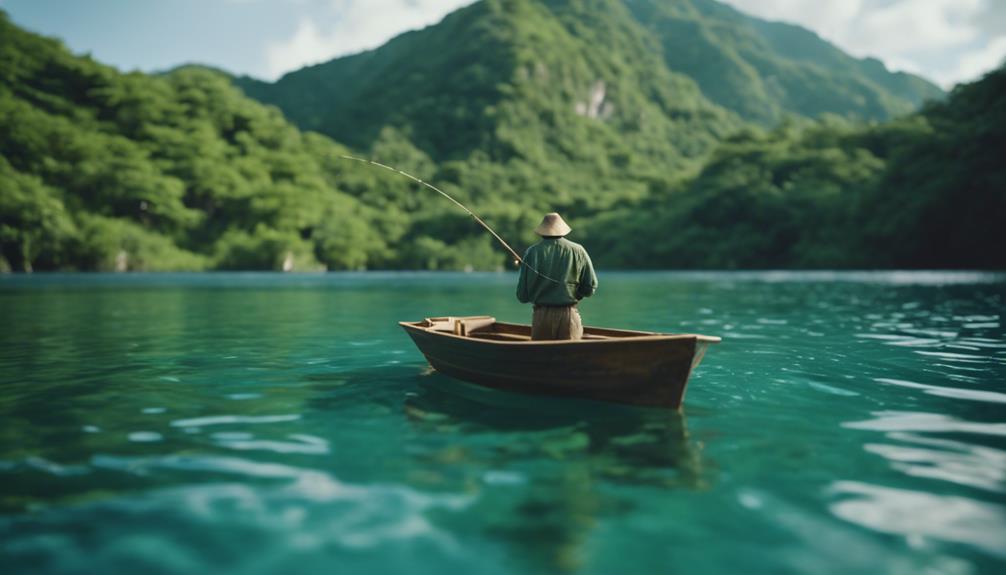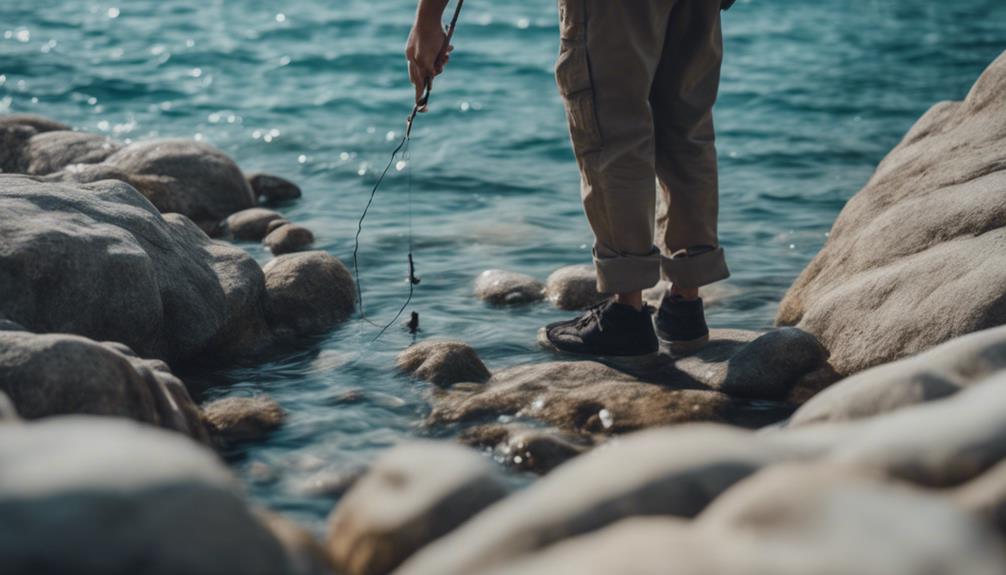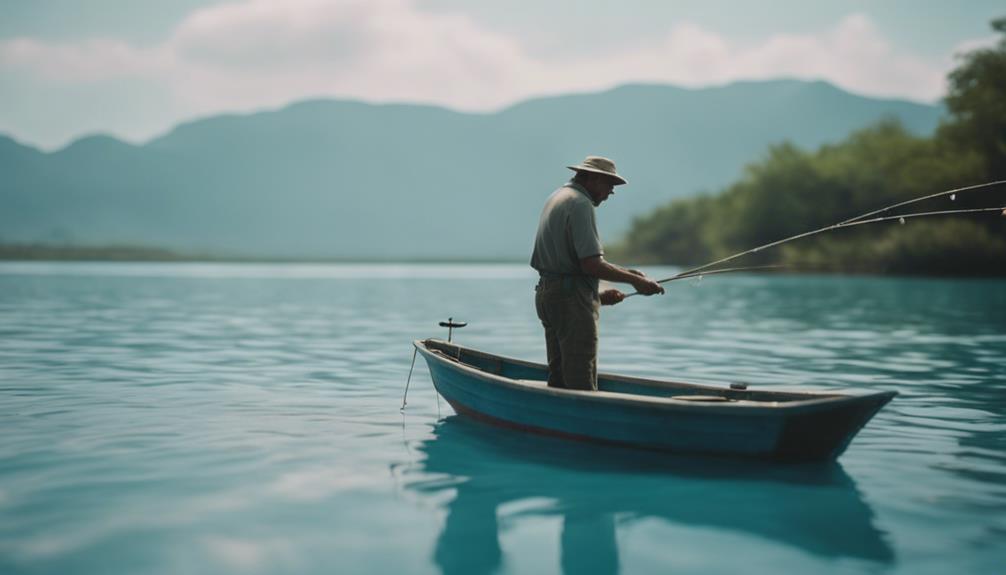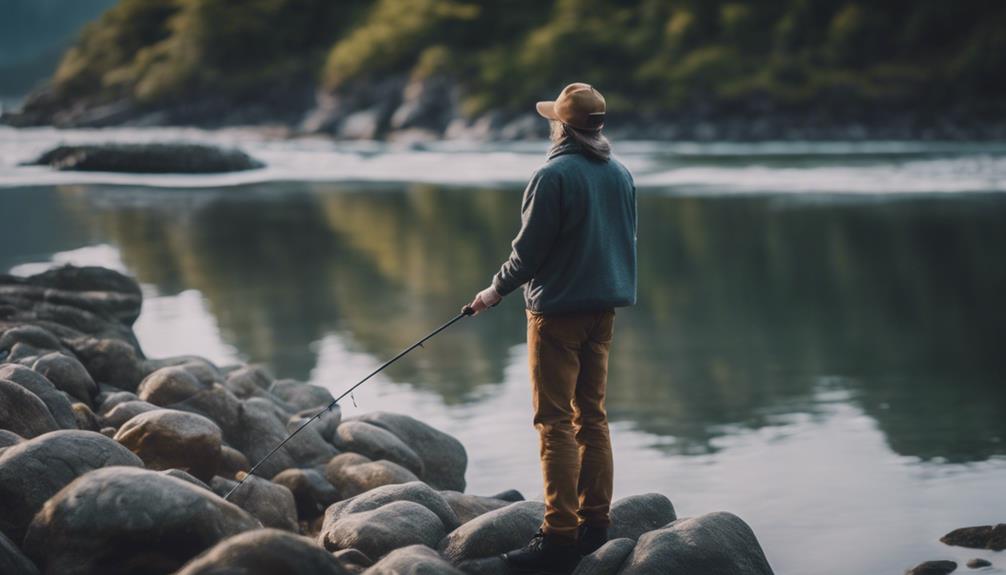Imagine hand lining as the quiet whisper in the midst of a bustling room, offering a gentle touch to the world beneath the surface.
Curious about this age-old technique that connects you to the water in a unique way?
Discover how hand lining for eco-friendly fishing goes beyond just catching fish—it's a sustainable practice that harmonizes with nature's rhythm, leaving you with a sense of fulfillment and responsibility.
Key Takeaways
- Hand lining is an ancient, efficient fishing method rooted in simplicity and sustainability.
- It promotes conservation by reducing ecological footprint and waste while preserving vulnerable fish populations.
- Hand lining involves basic, portable equipment like hand lines or reels with minimal impact on marine ecosystems.
- Its future in conservation aligns with responsible angling practices, ensuring fish populations for generations to come.
Origins and History of Hand Lining

Hand lining, with its origins dating back thousands of years, has a rich history rooted in simplicity and efficiency as a traditional fishing technique. Unlike modern fishing rods with reels, hand lining involves a basic approach using just a line, lure, and hook.
Historical records reveal that ancient civilizations such as the Egyptians, Greeks, and Romans practiced hand lining. This technique was particularly favored on early sailing vessels due to its straightforward nature. By manually controlling the line, fishermen could attract, hook, and reel in fish without the need for complex gear like a fishing rod.
Hand lining's enduring popularity in coastal communities worldwide is attributed to its eco-friendly and sustainable aspects, making it a time-tested method for catching fish.
Benefits of Hand Lining for Conservation

Amid concerns about environmental impact, the benefits of hand lining for conservation are increasingly recognized within the fishing community. Traditional fishing methods like hand lining help reduce the ecological footprint of fishing activities.
By eliminating the need for complex gear such as reels and motors, hand lining promotes environmental conservation by minimizing gear waste and reducing the use of non-biodegradable materials. This sustainable fishing practice also allows for selective fishing, enabling anglers to release unwanted or undersized catch easily.
Moreover, hand lining enables fishermen to target specific species, contributing to the preservation of populations of vulnerable or overfished fish. Its simplicity fosters a closer connection with nature, instilling a greater respect for marine ecosystems and biodiversity.
Techniques and Equipment for Hand Lining

Exploring the techniques and equipment utilized in hand lining offers a deeper understanding of this eco-friendly fishing method. Hand lining involves using a basic hand line or hand reel with no moving parts, differing from traditional rod and reel fishing. The simplicity of hand lining enhances the connection between the angler and the fishing experience.
Traditional hand lines are typically crafted from solid wood and have compartments for storing fishing line. This lightweight and portable method requires minimal setup and maintenance compared to rod and reel fishing. Hand lining is versatile and suitable for various fishing environments, providing a direct and immersive way to engage with nature while enjoying the art of fishing.
Sustainability Practices in Hand Lining

How can sustainability practices in hand lining benefit marine ecosystems and promote conservation efforts?
By incorporating sustainability practices and catch-and-release techniques into hand lining, you can make a significant impact on the health of our oceans. Consider the following:
- Reducing Gear Complexity: Simplifying your fishing gear minimizes environmental impact.
- Low-Impact Method: Hand lining is gentle on marine ecosystems, preserving their delicate balance.
- Selective Fishing: Targeting specific species helps in reducing bycatch and protecting non-targeted marine life.
- Contribution to Conservation: Your eco-friendly fishing practices actively contribute to conservation efforts.
- Catch-and-Release: Practicing catch-and-release guarantees the sustainability and longevity of fish populations.
Embrace these sustainability practices to become a steward of the oceans while enjoying the art of hand lining.
Future of Hand Lining in Conservation

Looking ahead, the future of hand lining in conservation appears increasingly promising as more anglers recognize its eco-friendly benefits and contribution to sustainable fishing practices. Hand lining promotes conservation by reducing the use of harmful mechanical reels, offering a low-impact fishing method that minimizes environmental disturbance. This technique aligns with responsible angling principles, emphasizing catch-and-release practices to guarantee fish populations' survival for future generations.
As anglers embrace hand lining, its versatility and eco-friendly nature make it a valuable tool in preserving aquatic ecosystems. The simplicity of hand lining not only benefits marine life but also reduces the carbon footprint associated with traditional fishing gear. Embracing hand lining can play a significant role in promoting sustainable fishing practices and marine conservation efforts.
Conclusion
So next time you're looking to enjoy a sustainable fishing experience, consider trying hand lining.
It's a simple and eco-friendly method that connects you to nature and helps conserve marine life.
With minimal equipment and easy setup, hand lining is a great way to enjoy fishing while protecting our oceans for future generations.
Give it a try and see the benefits for yourself!
👨👩👧👦 Dwight’s a married dad of 4 who loves to cast a line 🎣 into both fresh and salt waters. His heart belongs to his family and the sea. 🌊 #FamilyMan #FishingLife #DadOf4 🐟✨

